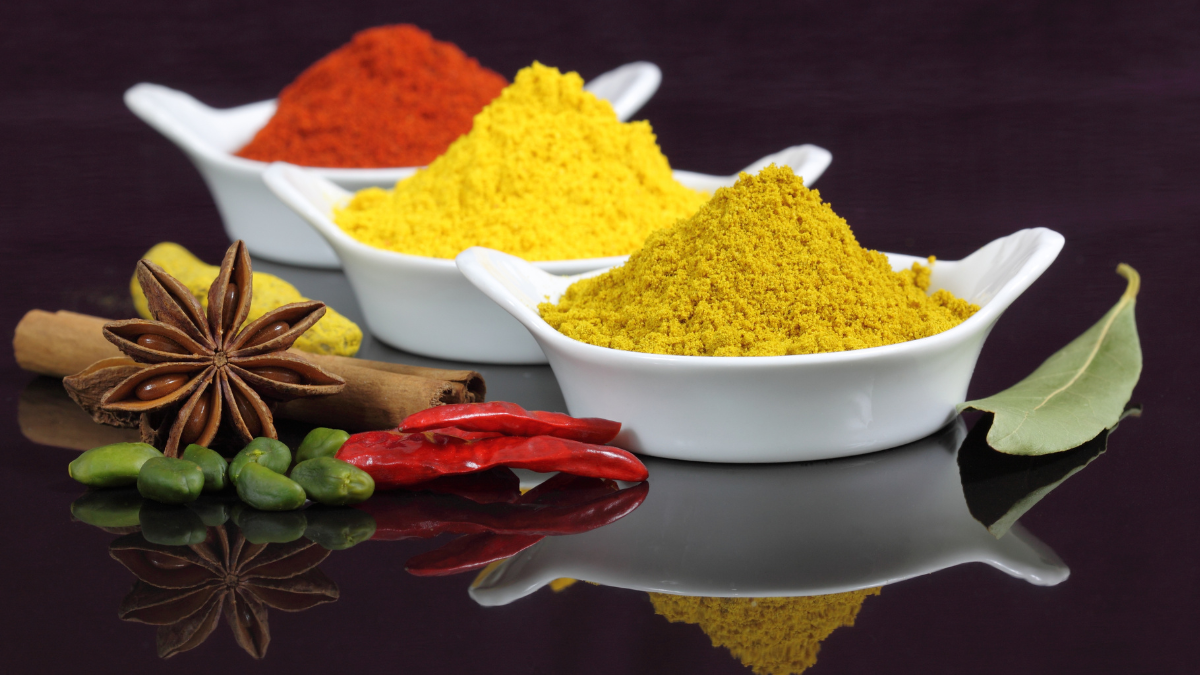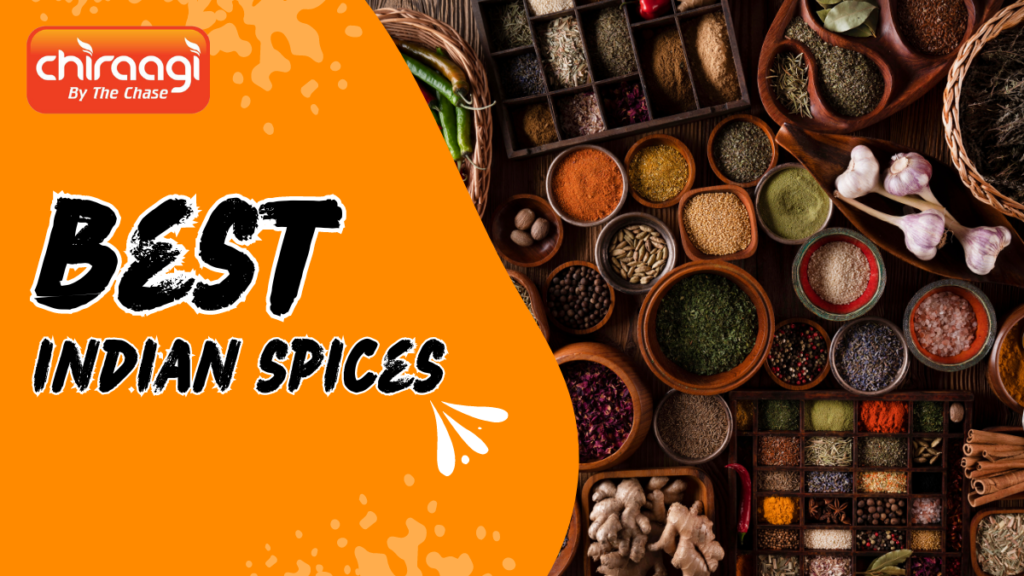Indian food is well known for its diverse range of flavors, scents, and hues, which are enhanced by a wide variety of spices. These spices provide several health advantages in addition to giving food richness and depth. This article delves into the world of Best Indian spices, examining its history, applications, and special characteristics that render them invaluable in kitchens around.
Best Indian spices Turmeric: The Golden Spice
One of the most popular spices in Indian cooking is turmeric, sometimes referred to as the “golden spice.” Turmeric’s key ingredient, curcumin, is well known for having anti-inflammatory and antioxidant qualities. A common ingredient in many Indian recipes, this spice gives food a bright yellow hue and a hearty, earthy flavor.
Uses of Turmeric
Because of its versatility, turmeric can be utilized in a variety of ways, including fresh, dried, or powdered. In addition to being a main component of curry powders, it can be found in classic recipes like turmeric milk, biryani, and dal (lentil stew). Turmeric is also frequently used to improve the flavor and color of marinades for fish and meat.
Health Benefits of Turmeric

Turmeric is well known for its anti-inflammatory, antispasmodic, and immune-boosting properties. Frequent use of turmeric can help avoid chronic conditions like arthritis, heart disease, and some types of cancer.
Cumin: The Earthy Aromatic
Another important spice in Indian cookery is cumin, which has a unique nutty and earthy flavor. Whole or powdered cumin seeds are utilized, and they are an essential part of many spice mixtures, such as curry powder and garam masala.
Uses of Cumin
Many Best Indian spices recipes, including tandoori chicken, chana masala (chickpea curry), and rajma (kidney bean stew), call for the use of cumin. In addition, pickles, spice blends, and even drinks like jal-jeera frequently contain it.
Health Benefits of Cumin
It is well known that cumin has anti-inflammatory, immune-boosting, and digestive properties. It is a great addition to the diet for people with iron deficiency because it is also high in iron.
Coriander: The Citrus Spice
Both the leaves and the seeds of coriander are essential in Indian cuisine. The fresh cilantro leaves offer a cool, zesty flavor to food, and the seeds have a warm, spicy taste.
Uses of Coriander
Often used in foods like sambar (lentil-based stew) and rasam (spicy soup), coriander seeds are dry-roasted to intensify their flavor before being processed into a powder. A bright, fresh accent may be added to anything from salads to chutneys by using fresh coriander leaves as a garnish.
Health Benefits of Coriander
The capacity of coriander to reduce blood sugar levels and aid with digestion is well documented. It is high in dietary fiber, vitamins, and minerals, and possesses antibacterial qualities as well.
Cardamom: The Queen of Spices
Known as the “queen of spices,” cardamom is widely valued for its rich flavor profile, which combines notes of citrus, flowers, and sweetness. This spice is utilized in meals that are savory or sweet.
Uses of Cardamom
A common component in Best Indian spices desserts like gulab jamun (dough balls drenched in sweet syrup) and kheer (rice pudding), is cardamom. It is also a component of many spice blends and savory foods like biryani. Furthermore, cardamom is a widely used tea flavoring.
Health Benefits of Cardamom
Cardamom is well-known for its ability to aid with digestion and detoxification. It can also relieve respiratory conditions and aid to maintain better oral health. Minerals including magnesium, calcium, and potassium can be found in good amounts in cardamom.
Cloves: The Spicy Flower Buds
The dried flower buds of the clove tree are called cloves, and they have a strong, comforting, and sweet flavor. In Indian cooking, this spice is used both whole and ground.
Uses of Cloves
Cloves are a staple in meals like biryani and masala chai, as well as a common addition to spice blends like garam masala. They are also utilized in the process of marinating meat and pickling.
Health Benefits of Cloves
Along with having potent antibacterial qualities, cloves are high in antioxidants. They can aid with better digestion, immune system stimulation, and dental pain relief.
Fenugreek: The Bitter-Sweet Spice
Best Indian spices cuisine makes heavy use of fenugreek leaves and seeds. The leaves, called methi, have a little sweet, nutty flavor, and the seeds are slightly bitter.
Uses of Fenugreek
Fenugreek seeds are used in fish curries and methi chicken, as well as in spice blends like panch phoron. Potato and fenugreek dish aloo methi and parathas both use fresh fenugreek leaves.
Health Benefits of Fenugreek
Fenugreek has a reputation for enhancing digestion and lowering blood sugar levels. It is high in vitamins and minerals and also aids in lowering cholesterol.
Mustard Seeds: The Pungent Spice
Round, tiny mustard seeds are available in yellow, brown, and black colors. They are used whole, powdered, or as mustard oil in Indian cookery and are noted for their strong flavor.
Uses of Mustard Seeds
Tempering is a cooking method in which spices are fried in hot oil to unleash their flavors. Mustard seeds are employed in this process. They are frequently used in recipes for pickles, sambar, and rasam. Additionally, frying and cooking are done with mustard oil.
Health Benefits of Mustard Seeds
Omega-3 fatty acids, magnesium, and selenium are abundant in mustard seeds. They can improve cardiovascular health, digestion, and have anti-inflammatory qualities.
Asafoetida: The Hing Spice
Hing, or asafoetida, is a gum resin that is extracted from Ferula plant roots. It smells strongly, but when cooked, it takes on a delicious, umami flavor.
Uses of Asafoetida
Small amounts of asafoetida are used to improve the flavor of meals like sambar, kadhi (a curry made with yogurt), and dal tadka (tempered lentils). Traditional medicine also uses it as a digestive aid.
Health Benefits of Asafoetida
The digestive advantages of asafoetida are well documented, as is its capacity to lessen gas and bloating. Moreover, it possesses antifungal, antiviral, and antibacterial qualities.
Conclusion
Indian spices provide several health advantages in addition to being necessary for producing the complex and varied flavors of Indian food. These spices infuse our food with a plethora of flavor and health benefits, from the bright tones of turmeric to the sweet undertones of cardamom. Adding these spices to your food will improve its flavor and offer several health benefits.


